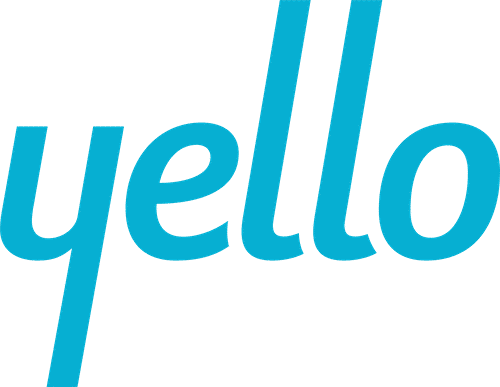While there are endless statistics available about workplace and workforce diversity, very few take both the employee and the employer into consideration. We conducted two U.S.-based diversity recruiting surveys to answer the question: what are job seekers looking for when it comes to an inclusive workplace, and are today’s companies rising to meet candidate expectations?
Read on to find out what today’s job seekers think about workplace diversity.
Move your company’s diversity recruiting from status quo to leading-edge
Download Diversity Recruiting: Employer Benchmark Report
Methodology
The surveys were conducted online within the United States by SurveyMonkey Audience on behalf of Yello between September 16 and September 26, 2019. They surveyed 500 full- and part-time employees, aged 18-73 and 250 full-time talent acquisition or recruitment professionals, aged 18+ in the United States.
Throughout this article are comparisons to The 2018 Yello Diversity Study. The 2018 survey was conducted online within the United States by The Harris Poll on behalf of Yello between August 6 and August 8, 2018. It surveyed 1,206 employed adults (ages 18+) referred to as employees in this report.
Please note: The same populations and methodologies were not used between 2018 and 2019, and therefore, the two reports are not a direct comparison. However, we believe the results raise important questions for employers to consider as they define strategies to attract, engage, interview and hire talent to build a diverse workforce.
Employees Share Their Thoughts on Diversity
Of the 500 full- and part-time employees who participated in the survey:
- 50% are women, 46% are men and 3% are non-binary
- 13% are members of the LGBTQ community and 8% are allies
- 61% identify with a religion
- 13% are military veterans or service members
- 18% self-identify as having a disability
- 32% are age 18 to 29; 30% are age 33 to 44; 24% are age 45 to 60 and 14% are over 60
- 12% are Hispanic/Latino; 66% are white; 15% are African American/Black; 4% are Asian; 4% are Pacific Islanders; 2% are two or more races
Why Workplace and Workforce Diversity Statistics Matter
It’s a buyers’ market, and we are not talking about homes or cars – we are talking about jobs.
According to the U.S. Bureau of Labor Statistics, there are currently more job openings than people looking for jobs. Companies are facing the tightest labor market in almost 50 years, and workforce demographics are changing faster than anyone anticipated (women make up almost half the workforce and, within decades, people of color will become the majority). Employers are stepping up their game to compete and win valued talent, but job seekers have the leverage to choose the employer that best meets their needs. So, what are job seekers looking for in a workplace?
Good pay, benefits, career progression, skills growth, and an opportunity to make a difference probably come to mind. How about workplace diversity? Does it really matter to job seekers? Is it reflected in your company’s recruiting strategy? Do your diversity recruiting efforts align with employee perceptions and preferences?
Get insights and answers, as we share the perceptions, shifts and gaps uncovered by our diversity recruiting benchmark surveys.
Job Candidates Demand Workplace Diversity
Just in case you had any doubts: workplace diversity matters. In fact, more than four out of every five employees responding to this year’s survey agree that employee diversity is important.
This is similar to last year’s findings, where 82% of respondents indicated they consider diversity part of an ideal workplace. It looks like employers agree – 87% of respondents to the Diversity Recruiting: Employer Benchmark Report say their leaders believe diversity recruitment is important and should be a priority.
“Workplace diversity matters now like never before. With a multigenerational workforce in full swing, candidates proactively seek out companies that allow them to bring their authentic self to the table and celebrate differences. Companies who are intentional about welcoming diversity into the organization understand that it’s a commitment to consistently shifting company behaviors, processes, and policies. The modern-day job seeker can quickly recognize if a company’s D&I efforts are disingenuous.”
— Jyl Feliciano, Head of Inclusive and Campus Recruitment Programs, Conagra Brands
Exactly how important is diversity to potential job seekers? Well, 83% of respondents indicate it’s important enough to be a consideration when deciding whether to accept a job. That’s a big shift from 64% in 2018. Does this mean a diverse workforce is becoming more important to more job seekers?
Not just a nice-to-have, 70% of employees go as far as saying they’d consider looking for a new job if their employer didn’t demonstrate a commitment to promoting a diverse workplace (that’s another big shift from 2018, when 54% of respondents felt the same way). So diversity impacts retention, too.
About one in four (26%) potential job seekers feel strongly about looking for a new job when their employers don’t commit to a diverse workplace. Good thing most talent acquisition experts who participated in our employer benchmark survey believe their organizations are positioned to show their commitment to job seekers – 81% have a strategy to recruit a diverse workforce.
Where do today’s employers stand on diversity recruiting strategies?
Find OutSeeing Is Believing
Diversity needs to start at the very top of organizations. 70% of employees indicate they would be reluctant to accept a job from a company that claims it is diverse but doesn’t have any executive leaders from underrepresented groups. This is another dramatic shift from 2018, when 52% of respondents agreed or strongly agreed.
“The findings regarding the reluctance of job seekers to apply for positions if they don’t see diversity in the leadership team is something that many organizations have felt but has been previously difficult to quantify. Yello offers some powerful insights in this space — including the fact that this inhibition toward applying for jobs may extend to who is involved in the interview process. The combination of all of this information cements for companies the importance of addressing these matters directly, and will create further urgency and attention to these critical areas of focus.”
— Tom Alexander, CEO and Co-Founder, Holistic
Taking it one step further, 63% of employee-respondents indicate they’d be reluctant to accept a job from a company if no employees from underrepresented groups are involved in the interview process. That’s 11% higher than last year, when 52% reported they would be reluctant.
Gap Alert! While seeing diversity during the interview process is important to most employees, the Diversity Recruiting: Employer Benchmark Report results indicate just a little more than one in five companies include team members from underrepresented groups in the hiring process. In fact, out of several recruiting tactics, talent acquisition experts indicate this is the tactic they use the least.
To find out which tactic came in first for driving success, download The Diversity Recruiting: Employer Benchmark Report today.
“Employees rank age as the most important type of workplace diversity. This is interesting because age isn’t often considered in diversity recruiting efforts, though it is a big topic for HR professionals since we have five generations in the workforce today. What’s more, age impacts everyone—we all grow old—so this raises important questions about ageism. Are HR leaders doing enough to combat ageism in the workplace?”
— Jen Meza, VP of People, Yello
What Matters Most to Top Talent
We asked employees what types of workplace diversity matter most. Responses show inherent traits like age, race and gender diversity top the list while acquired traits like marriage, parental and military status rank lowest.
When comparing last year’s results to this year’s, a few findings stand out:
- Age has moved into the top spot, pushing race/ethnicity into second. (Could this be because a fourth generation of employees – Gen Z – entered the workforce this year?)
- Gender diversity has become more valued than personality. (Does this have any connection to headline news on gender equality?)
- Of acquired traits, personality continues to rate highest. (How is this affected by the unconscious bias that may arise when companies look for culture fit?)
With just 1 in 12 people in the workforce actively looking for work, even the lowest ranked survey options make a difference to competing for and winning talent, as well as employee retention.
“There is no silver bullet in DEI work; it’s important to do a couple of things well at once to provide employees different entry points to the work. For example, not everyone is going to care about race, but you may draw folks in by talking about sexual orientation, citizenship/immigration, age, etc. By doing work that’s interesting to a wide audience of people, you can build ambassadors across the company.”
— Michelle Y. Bess, Diversity, Equity and Inclusion Director, Sprout Social
Pay parity is by far the most important workplace diversity initiative, according to respondents. This is followed by accommodations for people with disabilities, and flexible work options. Training, mentoring and pronoun preference initiatives are least important out of the choices provided, but they still have some support.
Gap Alert! One of the top three most important initiatives for workers isn’t as big a priority for employers. Find out which one in the Diversity Recruiting: Employer Benchmark Report.
What tactics are employers using to increase workplace diversity?
Download the Employer Benchmark Report
How Does a Diverse Workforce Impact the Workplace?
2019 employee survey respondents indicate that diversity in the workplace has the most impact on pay equity and job satisfaction. This is the opposite of last year’s results, which placed job satisfaction first (48%) and pay equity second (44%). However, in 2019, pay parity, employee engagement and company culture are all ranked nearly equally by employees.
Gap Alert! When we asked employers why diversity recruiting is important, they ranked the items above in a completely different order, with one exception – job satisfaction. Learn more in the Diversity Recruiting: Employer Benchmark Report.
“In order to reap the benefits of having a diverse team, company leaders must also focus on creating an equitable and inclusive workplace environment, in which underrepresented people are given the same level of respect, opportunities, and rewards as the rest of the team.”
— Michelle Kim, Co-Founder and CEO, Awaken
What Candidates Expect of Employers
Most job seekers (77%) indicate that they trust what companies tell them about diversity in company communications. This may correlate to new levels of employer transparency. CEOs are leading the charge by publicly committing to drive diversity (CEO Action for Diversity & Inclusion), pay equity (Employers for Pay Equity) and results (we’re talking total transparency, with periodic public reporting on workforce demographics, goals and progress).
Still, workers continue to look for organizations that walk the talk by having people from underrepresented groups in management and leadership. While last year’s employee benchmark results also rank diversity in management and leadership as the top two ways an organization can illustrate its commitment, last year’s respondents gave greater weight to these options – 49% selected diversity in management and 39% selected diversity in executive leadership.
Employers are facing the tightest labor market in almost 50 years. Find out how to build a successful diversity recruiting program.
“Organizations committed to inclusion create a dependable workforce of complementary people. These companies look at the whole person when hiring. Their leaders recognize that each individual is more than a title, skillset, or member of an ethnic group. They’re not colorblind or gender neutral. Just the opposite.”
— Scott Wintrip, Author, High Velocity Hiring: How to Hire Top Talent in an Instant
How Companies Should Drive Diversity
To build a diverse workforce, employees say companies should partner with organizations that focus on different aspects of workforce diversity (i.e., gender or race) and recruit at colleges with diverse student bodies. Employers say these are the top two steps they are taking to drive diversity, but when it comes to everything else, there’s a Gap Alert!
- 42% of employers are posting roles on specialized job boards; only 21% of employee survey respondents consider this important.
- Committing to interview candidates from underrepresented groups ranked third for employees, but fourth for employers. The same holds true for recruiting those with non-traditional backgrounds.
- Employers say recruiting at national diversity conferences ranks fourth (29%), while employees indicate this tactic is least important out of the choices given.
- Having employees from underrepresented groups on the hiring team seems to be more important to employees than employers.
It gets even more interesting when we look at how employers rank tactics by what’s most successful (hint: the most successful approaches aren’t the ones most companies use). Download the Diversity Recruiting: Employer Benchmark Report to learn more.
“The data is clear: Diversity is an area most businesses struggle with—and something candidates care about greatly. If leaders haven’t yet started the journey, they need to get going. If they have started, great—but remember, we’re not done!”
— Daniel Muzquiz, President and Chairman, The Predictive Index
What’s Next for Employers and Diversity Recruiting?
Have no doubt about it – workplace diversity is important, not only as a retention tool, but also as a key driver of recruiting success. Companies and talent acquisition experts need to pay attention. A diverse workforce can be a make-or-break point when employees are deciding to accept a job or leave one. And, employee perceptions about workplace diversity are changing fast.
In just one year, employee respondents have reprioritized what aspect of diversity is top of mind (from race to age) and where it has the biggest impact (from job satisfaction to pay equity). At the same time, there are some gaps between employee and employer perceptions of workplace diversity worthy of further exploration:
- Employers aren’t necessarily investing in what’s most important to employees.
- Diversity and inclusion initiatives that are most important to employers don’t necessarily have the biggest impact according to employees.
- What employees think affects diversity recruiting and what talent acquisition experts think are two different things.
Read the Diversity Recruiting: Employer Benchmark Report to:
- Gain a glimpse of some leading-edge diversity recruiting practices
- See where your efforts stand compared to other employers
- Learn actions to drive diversity recruiting progress and success


